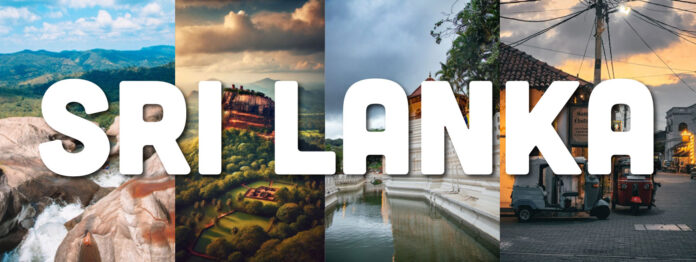Sri Lanka, a small island nation in the Indian Ocean, is a place where history, culture, and nature converge in stunning harmony. With its rich heritage and extraordinary diversity, this tropical paradise is a treasure trove of fascinating facts. From the world’s first female prime minister to the ancient bridge that once connected two countries, Sri Lanka’s stories are as captivating as its landscapes. Let’s dive into some of the most interesting facts about this island nation.
1. The World’s First Female Prime Minister
Sri Lanka made history in 1960 when Sirimavo R. D. Bandaranaike became the world’s first non-hereditary female head of government. Born in 1916, Sirimavo was propelled into politics after the assassination of her husband, Solomon Bandaranaike, who had been the Prime Minister of Sri Lanka. She served as the country’s prime minister for three terms (1960–1965, 1970–1977, and 1994–2000). Her leadership not only made her a global icon but also paved the way for women in politics worldwide. Sri Lanka remains proud of her legacy, with her remarkable contributions to the nation’s development still remembered today.
2. Teardrop of India
Sri Lanka is often referred to as the “Teardrop of India” because of its shape. The island is located just off the southern tip of India and is separated by the Palk Strait. This name, with its poignant imagery, is not only geographical but also cultural. In addition to being known as the “Teardrop,” Sri Lanka is also called the “Pearl of the Indian Ocean” due to its stunning beaches, diverse ecosystems, and rich natural resources. Whether you’re exploring its tropical rainforests or the pristine coastline, it’s clear why this nickname is so fitting. If you are looking for a serene getaway, consider staying at a mannar hotel resort to experience the island’s beauty firsthand, surrounded by nature and tranquility.
3. Home to the World’s Oldest Human-Planted Tree
Sri Lanka is home to one of the world’s oldest living trees, the Sri Maha Bodhiya, located in the ancient city of Anuradhapura. This sacred fig tree was planted in 288 BC and is believed to be a direct descendant of the tree under which Lord Buddha attained enlightenment. For over 2,300 years, it has been a place of pilgrimage for Buddhists from around the world. Its longevity and historical significance make it a symbol of resilience and spiritual devotion.
4. Sacred Tooth Relic
In the city of Kandy, Sri Lanka houses one of the most sacred relics in the Buddhist world—the Temple of the Sacred Tooth Relic. This temple enshrines a tooth believed to be that of Buddha, which was brought to Sri Lanka after Buddha’s death. The relic has immense political significance, as it is believed that the ruler who possesses the tooth relic has the divine right to govern the country. Every year, the sacred tooth is paraded during the grand Esala Perahera festival, attracting thousands of devotees and tourists alike.
5. The Origin of “Serendipity”
The term “serendipity” has its origins in Sri Lanka. The island was once known as Serendip by Persian and Arab traders, inspired by a Persian fairytale, The Three Princes of Serendip. The story tells of three princes who made accidental discoveries, and the term “serendipity” was later coined in the 18th century by English writer Horace Walpole to describe such fortunate discoveries. The next time you stumble upon something delightful by chance, you’ll have Sri Lanka to thank for that beautiful word.
6. A Biodiversity Hotspot
Despite its relatively small size, Sri Lanka is one of the world’s top biodiversity hotspots. It is home to a staggering variety of plant and animal species, many of which are endemic. Approximately 23% of the country’s flowering plants and 16% of its animals are found nowhere else on Earth. The island’s diverse ecosystems, ranging from rainforests to coral reefs, support this unique wealth of life. Notably, Sri Lanka is home to both the largest land mammal—the Sri Lankan elephant—and the largest marine mammal, the blue whale. For wildlife enthusiasts, Sri Lanka is nothing short of a paradise.
7. Stunning Landscapes
Sri Lanka’s landscapes are as varied as they are beautiful. The island boasts over 1,585 km of coastline, 103 rivers, and more than 50 waterfalls, each offering its own unique charm. One of the most famous waterfalls is Bambarakanda Falls, which, at 263 meters, is the tallest waterfall in the country. Beyond the beaches, you’ll find lush tropical forests, misty mountains, and picturesque tea plantations. For nature lovers, Sri Lanka’s diverse scenery offers an endless array of experiences, from wildlife safaris to hikes through mountain ranges.
8. The Ancient Bridge Between India and Sri Lanka
An intriguing feature of Sri Lanka’s past is the Rama Setu, also known as Adam’s Bridge, a natural limestone chain that once connected the island to the Indian mainland. Stretching 48 km, this bridge is believed to have allowed people to walk between India and Sri Lanka. According to Hindu mythology, it was built by Lord Rama to rescue his wife, Sita. However, this ancient structure was submerged by a cyclone in the 15th century and remains partially underwater today. The origins and purpose of this fascinating structure continue to be a subject of both scientific and mythological interest.
9. Spicy Cuisine & Tea Culture
Sri Lankan cuisine is a culinary adventure in itself. Known for its bold, spicy flavors, Sri Lankan food features an abundance of chili peppers, curry leaves, and spices such as cinnamon (which is native to the island). A popular dish is rice and curry, typically served with an array of side dishes, including pickles, sambols, and fried fish. In addition to its food, Sri Lanka has a rich tea culture. The country, once known as Ceylon, produces some of the finest tea in the world. Tea plantations in the highlands offer visitors a glimpse into the production of the island’s iconic Ceylon tea, which is cherished globally.
10. Cultural Reverence for Birds
Birds hold a special place in Sri Lankan culture and mythology. Sparrows are believed to bring good luck, while the peacock, with its vibrant plumage, is considered sacred. Many other birds, such as swans and parrots, are associated with divine figures in local traditions. The island is home to over 400 species of birds, making it a prime destination for birdwatching enthusiasts. Sri Lanka’s cultural connection with birds is deeply ingrained in its religious and mythological practices, making it a country where nature is revered in both tangible and symbolic forms.
Also Read: Sri Lanka renews visa-free entry for Indians







